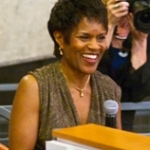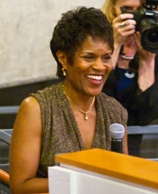
Mr. J. Benjamin Davidson
An Avalanche of Economic Impact Data
Posted by Jul 09, 2012 0 comments

Mr. J. Benjamin Davidson
Way back in May of 2009, Americans for the Arts began recruiting local, regional, and statewide partners for the Arts & Economic Prosperity IV national economic impact study. After three years of day-to-day project managing, data collecting, number crunching, and report writing, the study is finally complete and the findings have been released. Trust me, NO ONE is more excited about that than I am!
A research project of this scope and magnitude delivers a myriad of emotional highs and lows. Mistakes are made; then mistakes are fixed. Deadlines are missed; then “extended” deadlines are set. We all know the drill.
I am 100 percent certain that at least once, each of the 182 study partners wished I would just go away and leave them alone. I’m incredibly thankful that each of the partners stuck with the process. Their hard work made this study the largest and most comprehensive of its kind ever conducted. Many people have asked me about the specific challenges and successes of the project, and I’m happy to share my perspectives on a few of each.
CHALLENGES
1. Providing project oversight for 182 separate partners is a difficult task. It’s a frustrating feeling when you send an e-mail to 182 people, and your inbox immediately starts filling with requests for clarification. I knew immediately when my directions weren’t clear enough.
2. Utilizing multiple sources of data can be confusing. In the states where the Cultural Data Project (CDP) has been implemented, we used CDP data in addition to our AEP IV organizational survey (so that arts organizations submitting a CDP profile didn’t need to complete our survey as well). This tactic definitely reduced the burden on the organizations from which we needed to collect data. Unfortunately, it definitely increased the burden on my team and on our study partners located in those CDP states.
3. The fact that the study partners collected more than 150,000 audience-intercept surveys was both a blessing and a curse. It was a blessing because it is unquestionably the largest sample of audience spending data that has ever been collected. It was a curse because that equates to 32 legal-sized boxes full of surveys that required sorting, coding, and data entry. As my team processed the mountain of surveys, we stacked the boxes in my office. This worked fine until one Monday morning when I arrived at the office and discovered that a stack nine boxes high had collapsed across my desk—spilling neatly bundled surveys out into the hall, crushing my work phone, and staining my office door with blue ink from the boxes. Colleagues said I was lucky that I wasn’t at my desk when it happened, but I thought it might have been a fitting way to meet my demise...
Read More









Most Commented